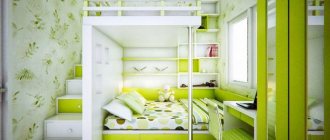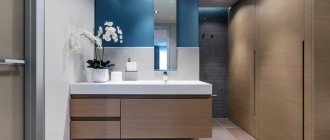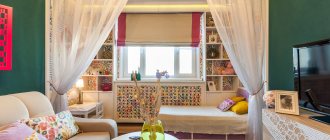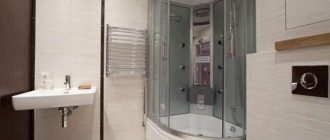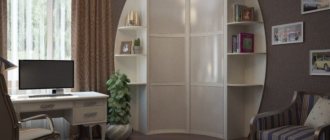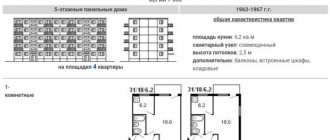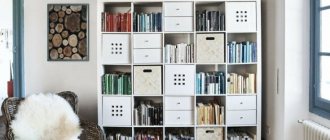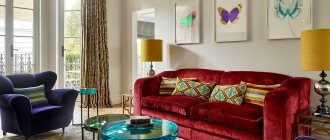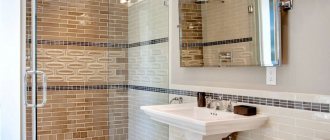Many parents and professional designers often face the problem of small rooms. After all, the most difficult option may be to arrange a compact children's room . However, if you approach this aspect from the correct and rational side, then landscaping a small space will not become an overwhelming task for you.
Of course, the most pressing issue is the need to introduce into a small-sized interior the required number of objects that somehow must fit here. It is logical to assume that if the room is converted into a nursery, then the minimum set of furniture should consist of a crib, a functional table, a comfortable chair and a wardrobe.
Photo: design of a small children's room
In addition to the fact that these mandatory interior items must find their rightful place in the room, you must not forget that the room will serve not only as a bedroom, but also as a play area with brothers and friends. In other words, if several children grow up in a family at once , then parents and designers are faced with the problem of planning a room where each child should have an individual island at their disposal for activities.
Stylish interior of a small nursery
Color design for a children's room
The colors used in the interior of a small nursery should visually expand the space, create a light, pleasant atmosphere, and evoke positive emotions. Therefore, designers focus on light colors, choosing more saturated bright colors for accents.
Modern designers offer a variety of ideas for a small children's room that will allow you to fit all the necessary pieces of furniture and things in it.
The main tone should be calm: beige, white, pale gray, blue, light green. These colors have a beneficial effect on the psychological state. Red, yellow, purple, rich green or blue elements make the interior expressive and extraordinary.
First of all, it should be a very bright room, in which the lack of natural light should be compensated by a large number of lamps.
Decoration and choice of room colors
The layout of the nursery needs to be thought out in detail, having decided what functions the room will perform. If the room is intended only for sleeping, then it is better to decorate it in soothing colors. Neutral colors are calming and relaxing. Bright accents in the form of curtains, textiles and decorative components diversify the light palette.
Before starting renovations, you should discuss the design of the room with your children. It is necessary to take into account the preferences of the little family members and find the ideal solution for everyone.
For boys and girls
Creating the interior of a children's room for two children of different sexes is not an easy task. A separate space for a girl and a boy is necessary, so the largest room in area should be allocated for a joint room. When arranging it, the main role is played by zoning, which can be:
- plasterboard partitions;
- pieces of furniture;
- curtains, canopies;
- portable screens.
A good option for dividing a room is color. Children’s personal areas are decorated in the shades they like. It is taken into account that the abundance of bright or too dark colors has an adverse effect on the fragile nervous system, so they should be avoided. If a girl insists on painting the walls a rich pink color, then you can offer a compromise in the form of accessories and decor of this shade.
The optimal solution is a universal style. Light colors are suitable for young family members of any gender. In addition, these colors will make a small children's room for two children more spacious. You can dilute the interior with bright shades. The main thing is not to overdo it and maintain harmony and integrity.
Lighting plays a key role. The window should not be covered with thick curtains; it is better to replace them with blinds. On the ceiling, in addition to the main chandelier, it is recommended to place lamps that highlight the work and play areas. For dim lighting, it is better to install sconces near your seating area.
Expert opinion
Olga Kovalenko
Since 2010 I have been engaged in interior design and architectural design.
To renovate a children's room for children of different sexes, you need to choose natural and hypoallergenic materials.
For the floor, one of the materials such as oak bark cork, laminated coating, or linoleum is suitable. Carpet is less appropriate, since its pile is susceptible to contamination. To avoid slipping, you can put down a rug, and choose vinyl or washable wallpaper for the walls.
For two girls
The finished nursery should correspond to the hobbies, character and age of the daughters. If the children are small, then it needs a lot of play space. Schoolgirls need more space to study. It is advisable for each girl to allocate her own corner where she will feel like a mistress.
Young ladies love cute accessories: bows, flowers, ruffles. If the design allows, canopies can be built above their beds, and the sleeping area can be marked with a two-level ceiling.
When thinking through a color scheme, you need to remember that girls love everything bright. However, a room in such colors will look aggressive. Therefore, it is better to decorate a children’s room in neutral shades and diversify it with colored textiles and decor, depending on the daughters’ preferences. In this case, the influence of colors on the subconscious should be taken into account:
- red – causes excitement and difficulty falling asleep;
- yellow – suitable for dreamy, calm girls;
- orange is a positive color, however, you should choose delicate shades, for example, peach;
- green – calms;
- blue, light blue – relieve tension and anxiety;
- purple – increases anxiety; it is not recommended for use in the interior of rooms for girls prone to depression.
When equipping a room, it is advisable to take into account that young ladies like to dress up. Therefore, in their nursery they need to hang mirrors and equip a dressing room.
For two boys
When renovating the room of young men, you should remember that they are less inclined to order than girls. Therefore, compact furniture with many drawers is suitable for it, where, if necessary, you can quickly put away toys and other things. Zoning the room is also important, because personal space is necessary for every person.
The choice of color scheme depends on age. Calm colors are suitable for kids. For older boys - blue, blue, green, brown, gray. Teenagers like black and white designs mixed with bright details.
When choosing a style for a room, you need to take into account the age and preferences of the children. Older schoolchildren will prefer the traditional option, while younger boys will be delighted with the space-like interior. In this case, a compromise is achieved in this way: the room itself can be decorated classically, and the younger son’s individual area can be diluted with themed accessories.
Young children love to draw on various surfaces. To protect the wallpaper in the room from young artists, it is better to prudently equip it with a corner for creativity by placing a couple of drawing boards on one of the walls. For older brothers, you can arrange a sports sector and a corner for board games.
Zoning the space of a children's room
In conditions of limited space, an effective technique for optimizing space is zoning, dividing the room into sections, each of which performs a specific function. Interior items are distributed in accordance with the purpose of a certain zone.
The choice of colors will depend on the character of the children.
The areas that should be provided depend on the age of the child. The children's room serves as a bedroom, playroom, and place of communication. For older children, a place is provided to do homework, read, and play sports. If you plan to accommodate two or three children in a room, then you should take into account that each needs an individual place to study and sleep.
The nursery can be decorated in either calm, light colors or bright and cheerful ones, so that it looks like a real playground.
The bed is an important element of the design of a small children's room
Continuing the review, we cannot ignore the options for placing a sleeping place for your child. Many designers base their design decisions on this accessory, and further zones are developed around it. This is not without meaning, since there are situations when several children grow up in a young family at once , who must fit in the room and not feel discomfort.
The article may be useful: how to arrange a room for two children.
Metal bunk bed
An absolutely correct decision would be to introduce a bunk bed design into the design, which will largely serve as an example of optimal space saving. However, it may happen that a child who is asked to occupy the second tier simply cannot be there, for example, due to a fear of heights or lack of air when seeing a low ceiling.
Wooden bed in two tiers
It is in this case that there is the option of using combined beds, which are not so high from the ground (only 70-80 cm), but they take on the function of cabinets with drawers. The beauty of the design is to equip the bottom of the bed with drawers for storing things.
The staircase to the second tier should be quite comfortable
It’s enough to imagine how much space can be unloaded without using a chest of drawers in the interior. It’s better to install two similar cribs for babies in a room than to figure out the location of a large closet that will “gobble up” a lot of space.
Small nursery for two children
An equally original version of a combined bed can be a special model equipped with a retractable mechanism on wheels. When folded, only one bed appears, which transforms into two at night.
Pull-out bed saves a lot of space
Using a retractable mechanism, the second bed simply rolls out from under the first, which is very convenient. Consequently, the space saving becomes absolutely obvious!
↑ back to contents
Children's furniture
To prevent the nursery from looking cluttered, place a small amount of furniture, but it must be functional.
The main task of parents is to install one or more beds, a comfortable desk and a spacious storage system.
To visually enlarge the room, furniture is placed close to the walls, trying to free up as much space as possible in the middle. It not only creates a visual effect, but also serves as a place for children's activities and games.
Toys in a nursery should delight its little owners and at the same time teach them to care for their things independently.
A completely crowded nursery puts pressure on the psyche and extinguishes positive, joyful emotions. To place things and books, it is better to use closed shelves, bedside tables, and wall cabinets. Bulky cabinets and open shelves visually narrow the space and make it disproportionate.
The minimum set of furniture for a nursery consists of a bed, a table for studying, a chair and a locker for clothes.
Most often, the core of a small children's room design project is the bed. All other interior elements play around it. If you plan to accommodate two or three kids, then preference should be given to a bunk bed or a pull-out structure.
It may come as a surprise to some, but children prefer small bedrooms rather than large, faceless spaces.
Pull-out beds also save space, but the risk of trauma to the child’s psyche due to his fear of falling from a height while sleeping disappears. Regardless of the design, the bed is chosen to be durable, stable, safe, and appropriate for the height and weight of the child. It is important to have an orthopedic mattress that correctly forms the growing spine.
Children spend a lot of time sleeping.
The furniture industry offers many options for combined beds, combining a sleeping area with drawers for storing things and closed shelves. Attic-type beds, when the place to sleep is combined with a work desk, cabinets for things and school supplies. This set is a ready-made room with three zones: night rest, work or study, games and communication.
A small bedroom allows you to unleash the full creative potential of parents, find original solutions and create a unique design.
It is preferable to choose a folding table for studying in a small children's room. After classes, drawing or modeling, the table is folded down to make room for play. A convenient design is when the tabletop on one side is not rigidly attached to the wall on hinges. To work, it is raised, the child has a full-fledged table. When not in use, the tabletop is lowered and does not occupy free space.
This option is especially convenient for two or three children.
The set of furniture may vary depending on the age and gender of the children. In a small boy’s room, you definitely need to find a place for sports equipment. A wall bars, pull-up bar, and punching bag will not take up much space.
These items are necessary for the normal physical development of the child.
General recommendations for arranging furniture in a nursery
A children's room is a space where a little person will spend most of his free time: play, relax, develop, dream, do homework. Therefore, when planning the purchase of furniture, you need to think about its functional features, performance characteristics and rational placement. Properly selected sets will ensure freedom of movement without compromising cognitive and play activities.
A children's room should be safe, functional, and aesthetically pleasing.
The room should be spacious, functional and compact at the same time. Furniture elements should be selected taking into account simplicity, convenience and safety of use. We must not forget that children grow quickly, so this factor is also important to consider when choosing a headset.
When arranging any nursery, take into account the height of the ceilings, their size, and the condition of the floor and walls.
We remember that a children's room is an activity zone, so there is no point in cluttering the space with massive wardrobes and wide beds with carved decor. You can often find both tiny rooms, tastefully furnished, and “royal” interiors with ridiculous furnishings. Aesthetic perception plays a key role. The belief – “the more expensive and good quality, the better” – is inappropriate here.
The parents' task is to use a minimum of elements to create maximum comfort for their stay.
A number of practical tips will help you get an answer to the question of how to arrange furniture in a children’s room:
We focus on the child's age
The bedroom for a newborn, a preschooler and a student are very different from each other. In a room for children, it is advisable to use a minimum of furniture and interior items. An abundance of chests of drawers and cabinets designed for the needs of newborns will continue to stand idle, taking up useful space. You should fill the room with furniture gradually, just as you will have to make adjustments to the arrangement system as your beloved child grows up.
The games sector will be the largest for preschoolers from 3 to 6 years old, but the educational sector will be absent for obvious reasons.
It is better to seriously think about a set closer to 3-4 years old, when it is time for a child to buy his first individual furniture set. Please note that it is better to place furniture along the walls, thereby leaving the middle of the room free. The filling can be very different: a corner wardrobe or compartment, a traditional desk or a “growing” desk, bedside tables, poufs, a couch, an elephant sofa or a car bed, a bunk bed or an attic.
When your child starts going to school, you will have to think about purchasing a computer desk, which will inevitably reduce the size of the gaming sector.
Practicality and safety are the basis of choice
Furniture must be arranged in such a way as to eliminate the risk of injury. Preference should be given to durable structures. Children learn the world by touch; younger schoolchildren tend to be constantly on the move, so you should make sure that upholstered and cabinet furniture has no sharp corners.
The bed should not be positioned with the head of the bed facing the radiator or window - this will protect the child from respiratory diseases.
Ergonomic rule
There should be as much free space as possible in the nursery. Zoning is a prerequisite for teaching a child order and discipline. Usually there are sleeping, sports and play areas and work areas. It is important to equip each one in accordance with its purpose.
Poufs and chairs in the play area should not have sharp corners - this reduces the risk of injury during active games.
What accessories will your child like?
These can be bean bags, sofa cushions, handmade wall rugs, fabric or ribbon appliqués on curtains. A magnetic alphabet or a drawing board can become an element of interior design and at the same time a tool for the development of a child. A basket for storing toys can decorate a room.
The nursery should fit all the necessary furniture, but at the same time there should be plenty of space for games.
A small room should not be overloaded with many small parts. A few framed photographs or drawings will suffice on the walls.
On the walls you can hang photos of the child or paintings that match the overall interior of the room.
How to move walls
When planning a renovation of a small children's room, take into account some tricks that will visually expand the limited space and add light to the room:
Use only light paints for decoration; furniture should also be light. But it’s better to make the floor colored - it will make the room visually higher and wider.
In a narrow and long room, highlight only the back wall with color - then the room will seem wider. Horizontal stripes on the floor will also help in this case.
Light wallpaper with a small, dim pattern will add space to the room.
In a small, elongated room with high ceilings, horizontal stripes on the walls will help visually bring the far wall closer and steal the height of the ceiling.
It is better to design a small nursery in soft, warm colors - they will make the room fresher and create a positive mood in the child.
Textile
The decorative elements are original curtains or a bedspread, designed in the general style of interior design.
Furniture for a children's room should be safe, durable and compact.
Window design should not disturb the spatial balance of a child's room with a small area. This requirement is met by simple curtains, without draperies or folds, but with an unusual pattern or design. To protect from direct sunlight, it is better to choose thick, thin fabric. The density due to the thickness of the threads is less suitable.
A good choice is roller blinds and blinds.
For a nursery decorated in bright colors, it is better to choose curtains or drapes that are several shades lighter.
How to arrange furniture correctly in a small children's room?
When it comes to choosing the best furniture for a child’s room, there are no specific decisions that should be strictly followed. The main factor can be considered the advice of the designers, so that the location of the furniture is planned by the parents according to the principle of being as close as possible to the walls.
Option for placing a bed by the window in a long nursery
Having closed cabinets for storing toys will be a rational solution. However, children do not really like to use these functional areas for their intended purpose, so in some situations it can be recommended to install several open shelves in the room.
Furniture arrangement in a small nursery
The main thing here is not to overdo it, because the more open functional areas in the room, the more a feeling of discomfort and concealment of space is created.
Placing furniture in a narrow children's room
To achieve optimal use of spatial frames, engage a qualified designer who will put everything in its place, for example, using the possibility of making custom-made furniture.
↑ back to contents
Lighting devices
It is imperative to provide high-quality lighting for children. LED lamps are the most practical as a light source. Correctly selected brightness of light creates coziness in the children's room and a feeling of security. It is more rational to give preference to local lighting, which creates its own atmosphere in each zone.
There should be no dark corners in the room, but the lighting should not be intrusive.
Instead of a massive chandelier, it is better to use built-in sconces and laconic lamps. Lighting should be sufficient in the learning and play areas. A lack of light while reading, drawing, playing with small objects will cause decreased vision and concentration. Select luminaire designs that allow easy cleaning from dust, materials that do not emit harmful substances when the temperature rises.
The switch must be at a height accessible to the child.
How to divide a children's room into zones?
The functionality of the room will be more rational when its free space is organically filled with objects that are located in certain areas. Even within a small area, the following zones can be distinguished:
An example of zoning for a sleeping and playing area
- storage space (dressing room);
- space reserved for games;
- a work area where the baby, for example, will do homework;
- separate place for storing school accessories (book shelves).
The main criterion for identifying characteristic zones to suit the child’s needs is their close relationship, which will look as organic as possible, without visually contrasting.
Zoning using a cabinet as a partition
It is worth remembering that the child inevitably grows, and this fact requires a rational approach to the choice of furniture. For example, a modern functional desk is unthinkable without installing a personal computer and a possible set of peripheral devices on it. At the same time, it is necessary to take into account that the tabletop has sufficient space necessary for the child to sit comfortably at the table while working with textbooks. And, of course, the structural design should provide for the possibility of making adjustments taking into account the growing up of the baby.
Podium with study area and pull-out bed
Advice. Whatever constructive design project seems most optimal to you, do not seek to rely solely on your taste. Compare your child’s habits, character traits and personal hobbies and offer them to him. Perhaps the baby himself will tell you what he wanted to see in the interior?
You might be interested in our selection - 10 ideas for decorating a children's room.
Instead of a window sill there is a study table
An interesting solution for a small children's room is to use the window sill area as a work area . With this option, all that remains is to think about the appropriate design of the curtains, which will not become an obstacle during classes. The space under the window sill will be pleasantly complemented by compact bedside tables with drawers or shelves. Don’t forget to equip the window with high-quality double-glazed windows to prevent possible drafts, and also purchase a height-adjustable chair.
Guest sofa
Having a small sofa in the room for guests is a very successful creative expression. At the moment, there are very original designs of sofas made from blocks, using which you can build other functional objects from the elements. Children will be happy to use such a sofa not only as a “guest springboard”, but also for organizing various play activities.
↑ back to contents
What finishing materials are best to use?
For the nursery, you should select the most environmentally friendly natural materials. Wooden parquet or high-quality laminate are ideal for flooring. They are durable, retain heat, are easy to clean from dust and dirt, and look attractive.
The floor in the nursery should be non-slip and warm.
It is convenient to lay carpets in the play areas and bedside areas. You should choose small ones with short pile.
It is best to choose carpets that are easy to clean and do not absorb a lot of dust.
General rules and room zoning
In order for a small children's room to look visually larger, you need to follow several rules:
- Light color palette (pastel wallpaper with or without a pattern, glossy white ceiling, do not use more than three colors to create an interior). Bright accents are appropriate for children under 7 years of age and more subdued ones after 9 years of age.
- Choosing vertical shelves and racks, avoiding horizontal cabinets and open shelves (narrow, tall furniture pulls up the entire space, closed doors hide all things and organize order).
- A maximum of functional things, unnecessary accessories along with toys will clutter up the empty space of the nursery. It is important to have drawers and hidden shelves for toys on the windowsill, under the bed or in the corner.
The main rule for zoning a small nursery is to place furniture near the walls to free up as much space as possible.
- The work area should be well lit by daylight and artificial light, so it is better to place the table near the window. A student needs only a small table, a comfortable chair and one small wall shelf. It is better not to choose a wide table (to save space and not to clutter the table with unnecessary items).
- The rest area or bed in the nursery should be illuminated with muted warm light for the child to fully rest; a bedside night light will help the child get used to sleeping on his own.
- The play area may contain boxes with toys, an easel or slate board, a game console and a TV, a small sofa or soft bean bag chair, a floor mat or pillows.
The photo shows the functional use of the space by the window as a relaxation area with separate lighting.
Layout on paper
If you don’t know how to properly arrange furniture in a child’s room for a schoolchild, you should pay attention to many nuances. The convenience of permanent residence and movement is taken into account. Nothing should hinder movement or cause awkwardness. It is also important to clearly delimit the space - to allocate separate areas for sleep, normal rest, sports and study.
The design of the room can first be done in the program.
In order not to constantly move heavy furniture during redevelopment, you need to think through everything in advance. The best solution would be to draw a diagram to indicate the main elements and possible solutions to the problem. You can use computer programs or other engineering tools. This will greatly simplify the task.
There are many design apps available today.
The following points must be taken into account when planning:
- location of the sleeping place - it should not be located next to a window or heating system, as the child risks catching a cold;
- indicate the area of the room, the dimensions of all elements - window and door openings, ceiling height, length and width of the room;
- lighting in the room - the nursery should be light, so light sources are taken into account as much as possible;
- if the room is small, you should think about saving free space - using multifunctional furniture;
- when choosing furniture, you should take into account the general style direction of the room;
- You should buy furniture made from natural hypoallergenic materials so as not to cause allergies or irritation in the child;
- There should be fewer dangerous objects in the room.
The children's room should have the necessary furniture.
Note! To ensure maximum comfort, you should ensure there is free space. Otherwise, the child will feel like he is in a cage.
If there is no place for games or active recreation, the child will feel disadvantaged and there will be a feeling of discomfort. If the nursery is small, you should not overload it with unnecessary decorative elements. It is best to think through everything in such a way as to distribute the space into separate zones as profitably as possible.
You can buy a wall unit that contains all the necessary furniture for the nursery.
Arrangement of a sleeping place
A restful sleep is the key to your baby's health and well-being. When planning this area, many nuances must be taken into account. Particular attention should be paid to issues of comfort and safety. It is important to place the bed away from windows and heating pipes. This is done in order to reduce exposure to excessively dry air and drafts. Otherwise, there is a risk of developing a cold.
A sleeping place is the basis of a children's room.
You should also take into account the fact that the front door should be visible from the bed. Otherwise, the child will be afraid if someone comes into the room. When he sees someone coming in, he can relax, sleep peacefully and gain strength for the next day.
A small bed is enough for a child.
Considering the size of the bed and other features, it depends on the age of the baby. The layout should also reflect age-related changes in order to provide a larger bed in the future.
Arrangement of the playing area
The play area is an important attribute in a children's room. There should be enough free space for active recreation. If the size of the room allows, you can arrange an entire sports complex. This provides an opportunity not only to have fun, but also to engage in physical activity to keep yourself in good shape.
There should be plenty of space for games.
When setting up a play area, you should take into account the interests of the baby. If he likes to play a musical instrument, it is rational to set aside a place for the musical instrument in order to create comfortable conditions for studying musical notation. The main thing is to provide the child with enough space for development.
Place a rug in the center of the room to play on.
Additional furniture in the room
It is important not only to correctly arrange the furniture elements. You need to understand that all things need to be stored somewhere. If the size of the room allows, you can place cabinets and chests of drawers where toys, things and other everyday items will be stored.
A large closet is necessary for all the child's things.
If dimensions do not allow, things can be stored in a dressing room or another room. In the nursery, more care should be taken to provide the most comfortable conditions for the normal development of the baby. If there is little free space, you should choose multifunctional furniture.
There should be plenty of drawers for the child's toys and things.
Numerous drawers and shelves make it easy to store all household items at hand. The baby will have access to them at any time.
Note! When choosing furniture, do not forget about the child’s age and height. It should easily reach the necessary shelves and objects. Over time, you will have to change the location of certain elements.
Rules for choosing furniture
When choosing interior items for a child's room, you should take care of the child's safety. Furniture should be purchased round, without sharp corners, made from quality materials. The most durable and environmentally friendly option is wood, although its cost is quite high. You can also buy a set made of MDF, which is cheaper and quite durable. You should not purchase furniture made from chipboard; it is not designed for heavy use and is quickly damaged. In addition, this material is quite toxic.
When equipping a sleeping place, it is better to give preference to upholstery made from natural fabrics, which will be easy to clean. Synthetics usually cause allergies, so it is better to minimize their presence in the children's room.
Expert opinion
Olga Kovalenko
Since 2010 I have been engaged in interior design and architectural design.
For a children's bed, it is recommended to purchase an orthopedic mattress. It helps the child develop correct posture.
The priority when purchasing furniture is functionality, comfort and safety. For children, it is necessary to provide locks and closers on cabinet doors to avoid finger injuries. A teenager should be able to reach the top shelves while standing on the floor, and not by constructing complex structures from stools.
Public and private space
The children's room should be divided into functional zones. It recommends thinking about arranging their own corners for each child, where they can do what they love without worrying about being disturbed. It is also necessary to designate areas for sleeping, playing and doing homework. It is better to separate the sectors for recreation and school activities, and make the leisure area common.
Play areas
The space for spending free time should create conditions in which it will be cozy and safe. It will require much more space than other sectors, since children need constant movement. If the room is small, then this place can be made the center of the children's room. The color scheme of this area should be bright. It is necessary to lay a carpet on the floor, install drawers and racks for toys. You can also purchase a folding decorative house that can be easily removed if necessary.
It is recommended to install a wall bars or a sports complex in the room for older children. The coffee table will serve as a corner for creativity, handicrafts or board games. It is advisable to locate it in a well-lit area.
Place to study
For preschoolers, it is not enough to install small tables and chairs. Planning the work area for them requires a careful approach, since each child needs his own personal space. Therefore, when decorating a place to study, it is better to give preference to neutral colors that do not interfere with concentration, and place the furniture in the brightest place in the room.
There are many configurations of written interior items. If the children are about the same age, then a long tabletop for two is a good option. It is installed along a wall or window. This solution saves space perfectly.
For small children's rooms, corner furniture is suitable. An interesting idea is a straight table with opposite workstations, divided in half by a low shelving unit. This allows you to clearly delineate your individual study area.
For first-graders, it is better to purchase furniture that will grow with them. It provides adjustments to help maintain correct posture. This option, of course, is more expensive than usual, but it will pay for itself in a couple of years.
Rest
In the sleeping area next to beds or sofas, small cabinets are appropriate. The bedroom should not be overly illuminated; it is advisable to organize it in the far part of the children's room. To differentiate, it is better to use screens and bulkheads.
Depending on the layout, the sleeping places are located:
- along the wall, separating them with bedside tables;
- in front of each other;
- using the corner option.
Also, a children's bunk bed will look good in a small children's room. This idea will be enthusiastically received by preschoolers. But you should take care of the safety of the children and choose furniture with sides that do not allow them to fall off while sleeping. For older people, it is better to equip folding beds that can easily be transformed into a closet. Such interior items when folded do not take up useful space.
Personal space for every child
In addition to their own bed and table, each small family member should have a nook for their own things. For example, a wardrobe, in which everyone should be allocated personal storage space. A good solution would be to purchase beds with boxes at the base. The child will hide his secrets there and know that this is his territory.
Children, especially those with a large age difference, usually find it difficult to get along in the same room. Therefore, it is necessary that each of them understands that personal space is inviolable. It is necessary to clearly delimit the room so that the child knows what is his and what is not and does not invade someone else’s territory.
Rule No. 4. Compliance with basic workplace requirements
The organization of the work area requires special attention. It is different for a preschool child, primary schoolchildren and teenagers, so it is important to take into account all the nuances associated with the child’s age and hobbies.
An example of a work area in a preschool child's room
An example of a work area in a student’s room
An example of a desktop design in a teenager's room
The main requirement for the design of the work area is the location of the table near the window. It is desirable that the light falls from the left side if the child is right-handed, and, accordingly, from the right side if the child is left-handed. This arrangement allows maximum use of natural light. Despite this, additional lighting of the work area is also necessary.
Basic rules for decorating a desktop in a children's room
It is advisable that during classes at the table the child should not have his back to the door. This can cause discomfort, anxiety and uncertainty in the student. He will constantly turn around, looking back at the door, which will interfere with his concentration.
The work desk must correspond to the height of the child. If it is too low or high, the child will feel uncomfortable. This can also affect the formation of posture.
Correct position of the child on the chair
The desk and chair must match the height of the child
In order for the work area to be complete, it is necessary to equip it with additional places for storing office supplies, books, and notebooks. Multifunctional shelving with open shelves, drawers and cabinets are current.

